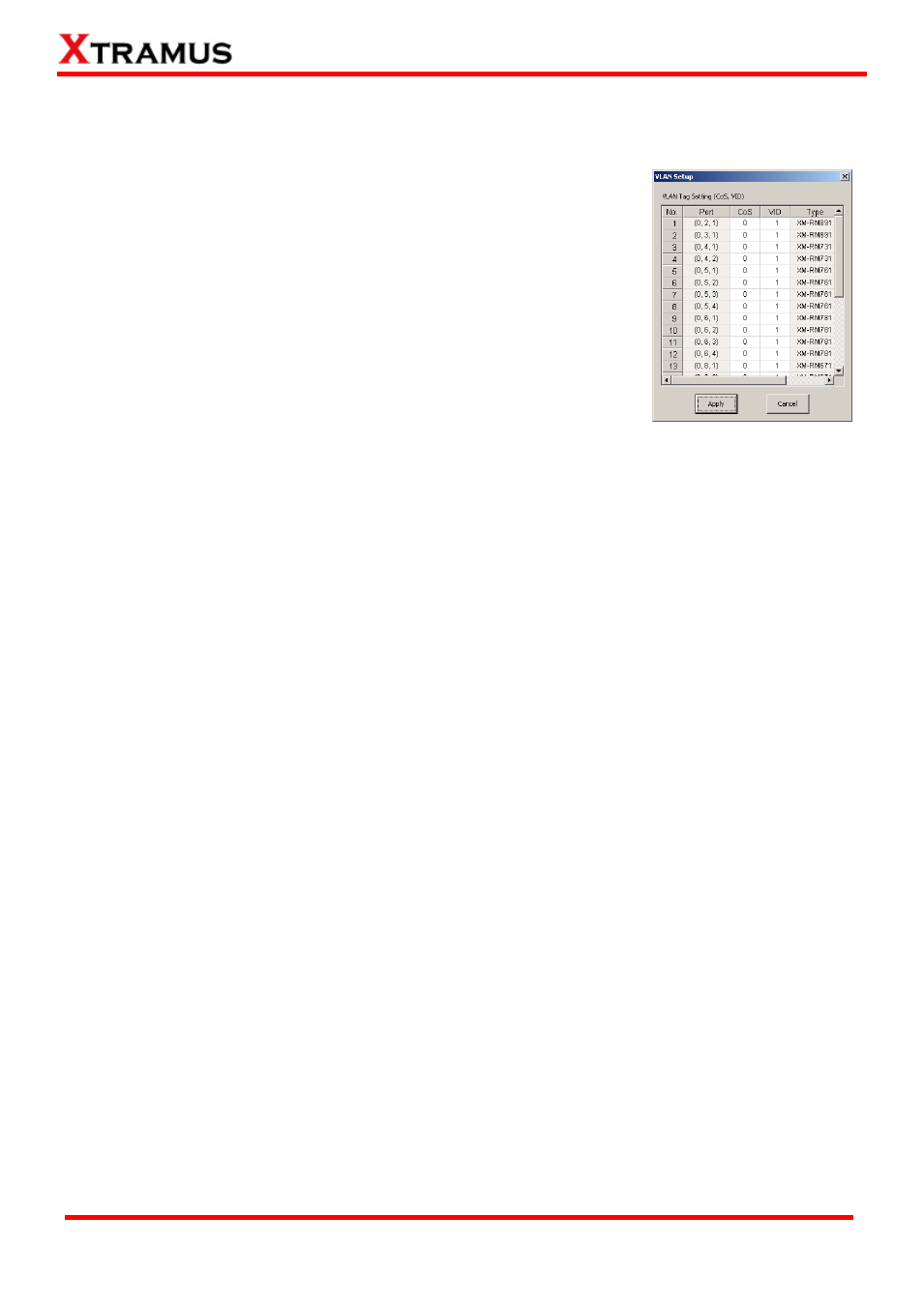Xtramus APMPT-4 V2.4 User Manual
Page 95

95
E-mail: [email protected]
Website: www. Xtramus.com
XTRAMUS TECHNOLOGIES
®
VLAN Setting: Add VLAN tag for test. VLAN (Virtual LAN) is a group of hosts with common
requirements that communicate within the same Broadcast domain regardless of the physical
location. By clicking the Setup button, you can configure CoS (class of service) and VID (VLAN ID)
on the pop-up VLAN Setup window. Click Apply and apply all the
changes you‟ve made here.
Learning Setting: Enabling this function allows learning packets
transmitted to the DUT before test packets are transmitted. If you
disable this function, no learning packets will be transmitted.
Enabled Learning: Enable system to perform learning.
Broadcast: Select the learning packet mode for Broadcast.
Unicast: Select the learning packet mode for Unicast.
Frame Count: Repeat frame count per learning packets burst.
Frame Gap: Duration time between learning frames.
Delay Time after Learning: The time gap between after learning and the next process.
Media Setting:
Media Type: You can set the media type for packet transmission or turn OFF.
Waiting Time: You can set the amount of waiting time after the media type is changed in this
field. This function will turn gray and can‟t be accessed if you select OFF under Media Type.
Link Status Check: Check the link status of your system, you can select the ON&Alarm
mode for snooze and pop up window.
Insert Elongated Frame Gap: When enabling this function, 1 bit-time of frame gap will be
inserted after a certain amount of packets are transmitted, and therefore, decrease packet loss
Weak Back-off Mechanism: When packet collision occurs, the system will wait for at least 1
slot-time before starting to transmit packets again if this function is enabled.
Enable X-TAG and Check: X-TAG is a 12-byte tag which is developed by Xtramus and
embedded at 45th~56th bytes of each testing frames generated by Rapid-Matrix for multi-stream
tests. X-TAG will be added to all the testing frames generated by APMPT-4.
Wait for Read Counter: The system will halt for the set microseconds before read the counters.
This function is useful for counters since they are stored in memory buffer and the final counter
value might take some time to read.
Enable Flow Control: When enabling this function, the transmitting rate will drop if traffic overflow
occurs. This function must be enabled under full-duplex.
Enable DI Checksum: Enable this function to add a tag to the frame for tracking frame integrity.
Enable Capture: System will capture packets from the port you chose if this function is enabled.
Dynamic Random Seed: Selecting this function will allow generation of different length of
packets from each port.
Port Select: By clicking this button, a Select Ports for Testing window will pop up, allowing you
to select the module cards and the ports you would like to use for the task.
